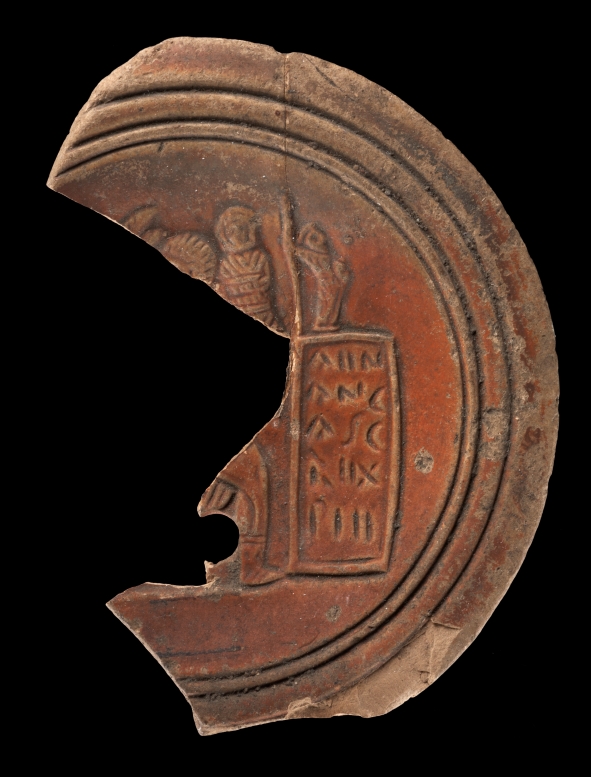Roman everyday objects, such as this lamp, are image-bearers of the myth of rule created by Octavian-Augustus. In this way, they adapt to new political currents.
The mirror of this clay lamp refers to the ancestry of Aeneas. The complete depiction - explained after a lamp mirror in the British Museum London - shows the escape of Aeneas from burning Troia: Aeneas in armour strides to the right. On his left shoulder he carries his father, the paralysed Anchises. On the right he leads his son Ascanios (Iulus) by the hand. In the background we see suggested temples.
The concept of pietas - piety, duty, love of one's father or love of one's country - is an important aspect of Augustus' myth of rule; it is even the leitmotif of the "Aeneid", the Roman national epic. In it, the poet Virgil (70-19 BC) immortalised Aeneas' escape from burning Troy and his subsequent odysseys. Just as Aeneas shows devotion to duty towards his old and paralysed father and rescues him from the burning Troia, Augustus shows devotion not only to his (adoptive) father Caesar, but also to his oldest ancestors. The Augustan restoration policy aimed, among other things, precisely at this devotion to duty.
The pietas became the most important cultural-political programme of the Augustan period. This is documented by the shield of honour for Augustus with the phrase "pietatisque erga deos patriamque" ("piety towards the gods and the fatherland").
The Roman Senate had decided on this tribute and had the shield erected in the curia, the Senate's meeting place, in 26 BC. The pictorial and permanently visible reference to the pietas therefore did not stop at everyday objects. In this way, mass-produced items such as clay lamps carried the message of pietas into the living rooms of the Roman population. (AVS)
Former August Kestner Collection, Rome
en









